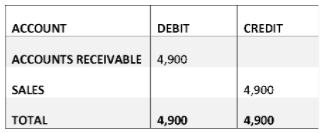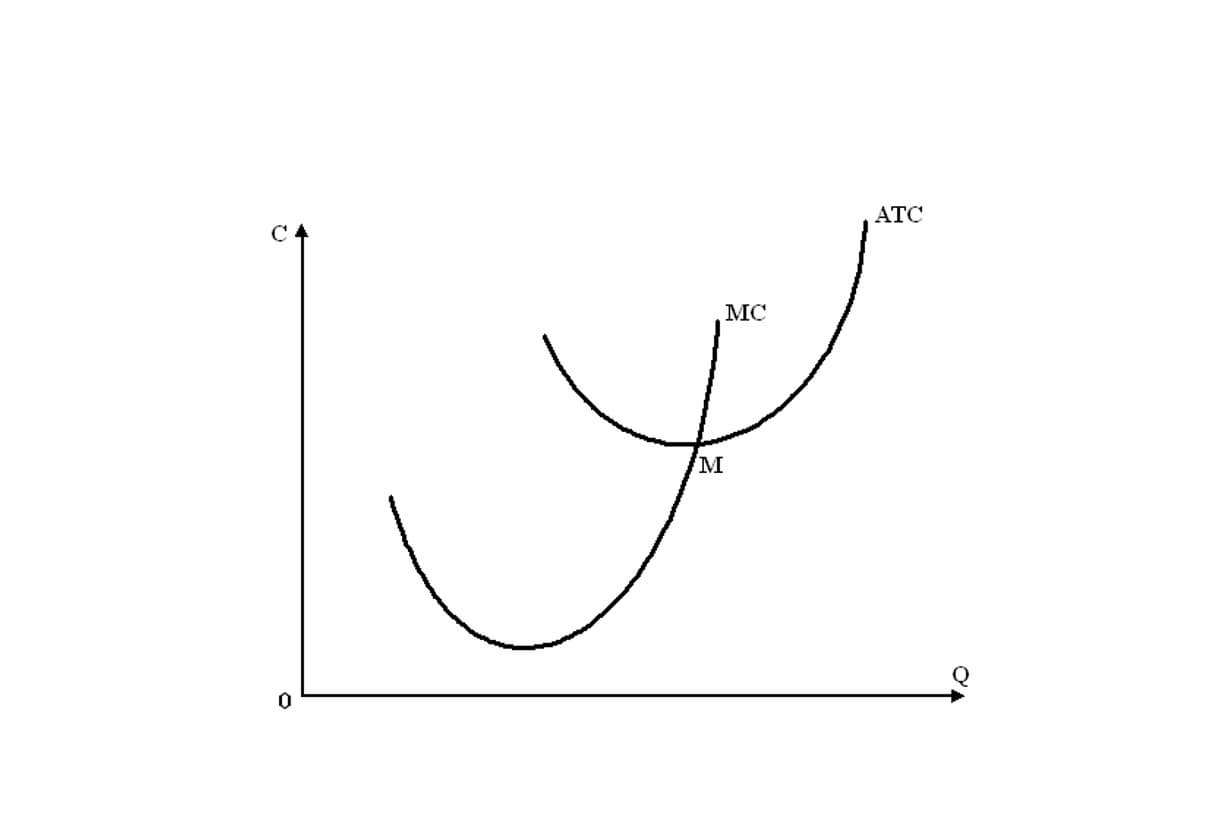Content

Calculate the company’s contribution margin for the period and calculate its breakeven point in both units and dollars. To improve the business contribution margin, the business has a range of options that include price increases, operational efficiencies, reducing cost or negotiating supplier discounts.
What is contribution rate?
Contribution Rate means the percentage of a Participating Employee’s Compensation to be withheld and contributed to their Account via payroll deduction under the Program.
Find out the contribution, contribution margin per unit, and contribution ratio. The contribution margin is the sales price of a unit, minus the variable costs involved in the unit’s production. It’s also important to understand the difference between the gross margin and the contribution margin.
How Do You Calculate It?
Both product lines are delivering value for the café with relatively high margins, but higher profits could be achieved if the café focused on selling a higher number of muffins. Steve’s Sign Company manufactures retail storefront signs and has sales of $100,000 for the year. The first step in doing the calculation is to take a traditional income statement and recategorize all costs as fixed or variable. The Berry ratio measures a company’s gross profit to operating expenses.
For example, a variable cost to a software company might be storage space on the cloud, and a fixed cost would be a lease on office space. The cost to host customer data on the cloud can change as new customers are signed, but the company pays the same rent to the building manager regardless of how many customers it loses or gains. Management can see how much income will be contributed to covering fixed costs. If expenses are classified as fixed when they are actually variable, it can cause a misleading contribution margin calculation and result in a poor business decision. Also, products with a low contribution margin that sell in high volume with no required effort would be worth keeping in the company’s product line. It’s also a way to help structure sales commissions or decide which products to keep in your product line and which ones to remove. You can apply your company’s resources to those products with the best contribution margins.

To explore this further, let’s use an example of your local cafe trying to measure the contribution margin of a cup of coffee for the month of March. It sounds like some technical jargon that your accountant may throw at you, but it’s actually quite simple to measure and understand. Capture accurate timesheets and automate complex pay calculations. Contribution Marginshall be calculated in accordance with Exhibit P consistent with past practice in the ordinary course of the Subject Companies’ business. GrowthForce accounting services provided through an alliance with SK CPA, PLLC.
Example: Contribution Margin And Break
The results will show how many units of the product your business must sell to break even. When all of these amounts are added together, your total contribution margin for the hotel is $1,450,000. The contribution margin allows for all of the fixed costs to be paid, including the hotel mortgage, administrative expenses and payroll, debt payments, and other expenses. Because these expenses are substantial, $1,200,000 of the contribution margin is needed to meet these obligations. It helps a business understand how profitable it is at the product level. It gives managers an essential insight into various aspects of the business and helps them make better-informed decisions. Again, referring to our earlier example, knowing the unit contribution margin of each of the products sold at the bakery will help the manager make several decisions.

This is because the breakeven point indicates whether your company can cover its fixed cost without any additional funding from outside financiers. In the Dobson Books Company example, the contribution margin for selling $200,000 worth of books was $120,000. This means Dobson books company would either have to reduce its fixed expenses by $30,000. On the other hand, net sales revenue refers to the total receipts from the sale of goods and services after deducting sales return and allowances. Variable Costs depend on the amount of production that your business generates. Accordingly, these costs increase with the increase in the level of your production and vice-versa. Remember, that the contribution margin remains unchanged on a per-unit basis.
Overview Of All Products
Contribution margin is the revenue remaining after subtracting the variable costs that go into producing a product. Contribution margin calculates the profitability for individual items that a company makes and sells. Specifically, contribution margin is used to review the variable costs included in the production cost of an individual item. It is a per-item profit metric, whereas gross margin is a company’s total profit metric. Once you have calculated the total variable cost, the next step is to calculate the contribution margin. The contribution margin is the difference between total sales revenue and the variable cost of producing a given level of output.
What is contribution margin and why is it important?
Companies calculate contribution margins for a single product, multiple groups of products or for their entire product line. A contribution margin is important because it shows how much money is available to pay the fixed costs such as rent and utilities, that must be paid even when production or output is zero.
(When you subtract COGS from revenue you get gross profit, which, of course, isn’t the same as contribution margin.) In fact, COGS includes both variable and fixed costs. Knight points to a client of his that manufactures automation equipment to make airbag machines. For this client, factory costs, utility costs, equipment in production, and labor are all included in COGS, and all are fixed costs, not variable. To understand how profitable a business is, many leaders look at profit margin, which measures the total amount by which revenue from sales exceeds costs. To calculate this figure, you start by looking at a traditional income statement and recategorizing all costs as fixed or variable.
Contribution Margin Ratio
The contribution margin is a very important number in a company’s financial reporting. It is the number that tells you if all of the variable costs are covered and how much is left to cover the fixed expenses.
Food Co. is a food truck that sells turkey sandwiches, grilled cheeses, and sodas. Laina, the owner, knows their total annual fixed cost will be $100,000. She has limited space on the food truck, so she has to maximize each service before returning to the commissary to reload. Applicant Tracking Choosing the best applicant tracking system is crucial to having a smooth recruitment process that saves you time and money.
- One way it is used is to determine how many units need to be sold to cover fixed costs and therefore break even.
- While repricing your product can make you more profitable, don’t try to increase your profit margin or contribution margin through accounting alone.
- Further, it also helps in determining profit generated through selling your products.
- These core financial ratios include accounts receivable turnover ratio, debts to assets ratio, gross margin ratio, etc.
- Once you know the profit a product is generating, you can begin to analyze and adjust prices accordingly.
- Another easy win for optimizing contribution margin and break-even would be to offer a sandwich combo special where you add a drink for $1 rather than $2.
- Both ratios are useful management tools, but reveal different information.
This percentage can help determine how a certain product compares to the rest of a company’s offerings, in terms of its profitability. However, it’s more likely that the contribution margin ratio is well below 100%, and probably below 50%. To understand the contribution margin, you’ll need to familiarize yourself with the financial terms included in the calculation.
How Is Contribution Margin Different From Gross Profit Margin?
In determining the price and level of production, fixed costs are used in break-even analysis to ensure profitability. Contribution margin , or dollar contribution per unit, is the selling price per unit minus the variable cost per unit. “Contribution” represents the portion of sales revenue that is not consumed by variable costs and so contributes to the coverage of fixed costs. This concept is one of the key building blocks of break-even analysis. Contribution margin figure is even more important for multi product companies. Normally, all products sold by a company are not equally profitable.
It is important to note that relying solely on contribution margin when making business decisions is short-sighted. Instead, it should be one of a variety of tools, costing methods, and financial analysis that is relied upon. The contribution margin per unit divided by the units of constrained resource required to produce one unit of product.
Weighted average contribution margin ratio equals the sum of contribution margins of all products divided by total sales. Your contribution margin is the amount that your revenue from one sale exceeds, or is exceeded by, the costs you paid to develop that one sold unit. These costs are called variable costs, and they vary as your business makes more products. So, if you spend $50 to make one unit of your product, and you sell that one unit for $75, your contribution margin is $25 ($75 minus $50). A key characteristic of the contribution margin is that it remains fixed on a per unit basis irrespective of the number of units manufactured or sold.
Furthermore, it also gives you an understanding of the amount of profit you can generate after covering your fixed cost. Such an analysis would help you to undertake better decisions regarding where and how to sell your products. The contribution margin meaning amount of contribution margin should be sufficient to cover all fixed costs as well as to contribute towards profit. If the amount of contribution margin is not enough to cover all fixed costs, the business will suffer a loss.
Business Checking Accounts Business checking accounts are an essential tool for managing company funds, but finding the right one can be a little daunting, especially with new options cropping up all the time. CMS A content management system software allows you to publish content, create a user-friendly web experience, and manage your audience lifecycle. Construction Management This guide will help you find some of the best construction software platforms out there, and provide everything you need to know about which solutions are best suited for your business. Is equal to Engineering Solutions net revenue minus operating expenses . The Compensation Committee may review and consider the effects of discontinued operations, out of pattern events, or other items it deems appropriate. The Compensation Committee has the final review and approval authority with respect to this calculation. When using this measurement, be aware that the contribution margin does not account for the impact of a product on the bottleneck operation of a company.
We can take this a step further and turn it into a ratio by dividing the margin by the sales revenues. This shows us that 25 percent of the revenues are available to pay for fixed costs ($25,000 / $100,000).
Contribution Margin As A Percentage Or Ratio
The contribution margin is computed as the selling price per unit, minus the variable cost per unit. Also known as dollar contribution per unit, the measure indicates how a particular product contributes to the overall profit of the company.
The metric is commonly used in cost-volume-profit analysis and break-even analysis. Outsourcing to a professional team that provided management accounting is essential to your business’s success and growth. As mentioned above, the contribution margin is nothing but the sales revenue minus total variable costs. Thus, the following structure of the contribution margin income statement will help you to understand the contribution margin formula. The contribution margin is the amount of money a business has to cover its fixed costs and contribute to net profit or loss after paying variable costs. It also measures whether a product is generating enough revenue to pay for fixed costs and determines the profit it is generating. The contribution margin can be calculated in dollars, units, or as a percentage.
Such fixed costs are not considered in the contribution margin calculations. Yes, it’s a formula as most accounting based measures are — but it can be kept quite simple. The contribution margin is when you deduct all connected variable costs from your product’s price, which results in the incremental profit earned for each unit. This shows whether your company can cover variable costs with revenue. Here, the variable costs per unit refer to all those costs incurred by the company while producing the product. These include variable manufacturing, selling, and general and administrative costs as well—for example, raw materials, labor & electricity bills. Variable costs are those costs that change as and when there is a change in the sale.
The contribution margin can be stated on a gross or per-unit basis. It represents the incremental money generated for each product/unit sold after deducting the variable portion of the firm’s costs. Thus, the total manufacturing cost for producing 1000 packets of bread comes out to be as follows. In this case, you would need to have some understanding of what expense line items contribute solely to fixed costs. This can be somewhat of a challenge and requires that some assumptions are made on what might be considered fixed versus variable. Contribution margin is helpful in that it highlights how much money per unit remains that can be allocated to fixed costs.
One97 communication Ltd (543396) Q2 2022 Earnings Call Transcript – AlphaStreet
One97 communication Ltd ( Q2 2022 Earnings Call Transcript.
Posted: Tue, 30 Nov 2021 01:20:17 GMT [source]
That is it does not include any deductions like sales return and allowances. Thus, the total variable cost of producing 1 packet of whole wheat bread is as follows. Contribution margin calculation is one of the important methods to evaluate, manage, and plan your company’s profitability.

Most of the best accounting software options will do most of this analysis for you. And many e-commerce platforms have enough accounting systems built-in to give you the numbers you need. But it’s still valuable to understand what’s behind the numbers and how you can use them to optimize your decision making. Sign up for a free trial of Deputy and see how you can easily work out your labor costs, decide whether these costs are fixed or variable, and easily schedule your staff. Contribution Marginmeans operating revenues less cost of revenues, selling and marketing expenses and research and development expenses.
Author: Anna Johansson





More Stories
साउथ में साफ हैं-नार्थ में हाफ है यही भाजपा का ग्राफ है: सुप्रिया श्रीनेत
इंदौर मेट्रो के लिए मीडियन का काम अब तक शुरू नहीं
जीतू पटवारी, अरूण यादव, डॉ. गोविंद सिंह, कटारे का 27 अप्रैल का भिण्ड, दतिया और ग्वालियर जिले का संयुक्त दौरा